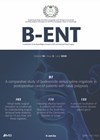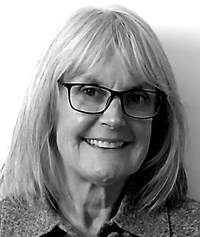
Journal Reviews
A new treatment for septal perforations?
Nasal septal perorations are notoriously difficult to close surgically and can be extremely symptomatic and debilitating for the patient. This paper describes the use of carvacrol (a monoterpene phenol of the family Lamiacaea which is often found in essential oils)....
How best to follow up a sinonasal cancer?
Sinonasal malignancies are rare tumours and, in the UK, are usually treated in tertiary treatment centres but may well be followed up long term in the patient’s local hospital, so advice on how best to manage these patients is invaluable....
Does pollution worsen inflammatory nasal problems?
This ambitious study, conducted over a period of four years, assessed 27,863 patients and compared levels of allergic rhinitis (AR) or chronic rhinosinusitis (CRS) with the levels of air pollution recorded, as assessed by levels of particulate matter (PM10). They...
To scan or not to scan?
This comprehensive review article seeks to establish how useful is MRI in the evaluation of patients with a history of smell loss or distortion. Interestingly, while some studies found the imaging unhelpful, one paper described found a 25% rate of...
Can SNOT-22 predict the need for surgery?
In this prospective Belgian study, the authors looked at whether the baseline Sino-Nasal Outcome Test-22 (SNOT-22) was able to predict the need for surgery and localise the pathology of rhinology patients and healthy volunteers. A total of 66 healthy volunteers...
Postoperative bleeding rates after inferior turbinate reduction using three different techniques
The most serious complication of inferior turbinate reduction surgery is postoperative bleeding, soon after the operation or later on. In this study comprising 751 patients, the authors have compared three common methods. Partial turbinectomy involved resection of the inferior turbinate,...
Does sleep quality improve when we adequately treat CRS?
In addition to the well-known symptoms associated with chronic rhinosinusitis (CRS), patients often suffer with poor sleep quality which is also detrimental to health and wellbeing. This meta-analysis looked at 35 papers reporting outcomes for CRS patients post surgery on...
Argon plasma coagulation for epistaxis in HHT
In this study from the Czech Republic, the authors looked at the effectiveness of argon plasma coagulation (a non-contact form of monopolar electrocoagulation) in treating recurrent epistaxis in patients with hereditary haemorrhagic telangiectasia (HHT). The advantage of argon plasma coagulation...
A comparison between trainee and trainer outcomes in mastoid surgery
In this era where training faces restrictions due to theatre time, fewer sessions available to trainees and requirements of consultant-led and consultant-delivered services, one unit confirmed that myringoplasties given to trainees reduced from 34.2% to 16%. This study compares outcomes...
Nasal polyps, does size matter?
This study from Germany investigates the correlation between nasal polyp size and return of olfactory function following endoscopic sinus surgery. Olfaction is affected more in patients with CRSwNP than with CRSsNP and the best chance of smell recovery occurs in...
Should we be utilising the pre-lacrimal approach for maxillary sinus inverted papilloma?
For some time now, gold standard management of the maxillary sinus inverted papilloma has been endoscopic medial maxillectomy (EMM). Recently the endoscopic prelacrimal recess approach (EPLRA) has been reported to provide good access whilst preserving the nasolacrimal duct and inferior...
A diagnosis-based scoring system to predict outcomes in necrotising otitis externa
Patients admitted with necrotising otitis externa have increased six-fold in the last 10 years. The prognosis is variable and dependent on co-existing morbidities. Charlston Comorbidity Index (CCI) is a weighted comorbidity scoring method, based on the presence or absence of...











